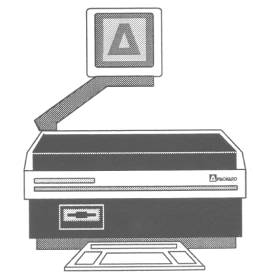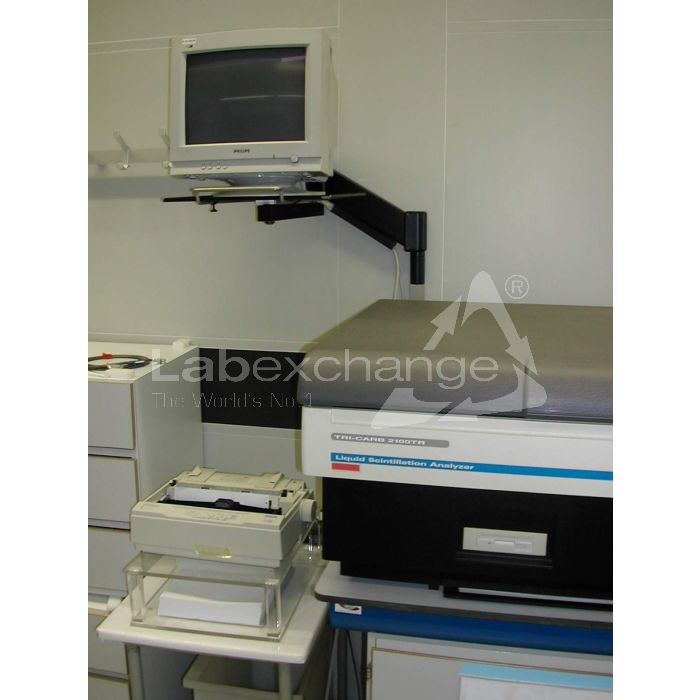Packard Tri-Carb 2100 TR
| Objektnummer | B00018508 |
|---|---|
| Seriennummer | 018508 |
| Object Naam | Packard Tri-Carb 2100 TR |
| Status | Stock unit |
Product groep: Beta-/Gamma Tellers
Status, leverings- en betalingsvoorwaarden
Apparatuurcontrole
De gebruikte apparatuur wordt voorafgaand aan levering gecontroleerd door Labexchange Service GmbH. U ontvangt volledig functionerende apparatuur.
Verzending
De vermelde verzendtijden zijn telkens de kortste voor een artikel. In bepaalde gevallen kunnen de daadwerkelijke verzendtijden daarvan afwijken. De uiteindelijke verzendtijden worden aangegeven in de opdrachtbevestiging.
In de regel bieden we combinatieleveringen aan. Levertijden zijn afhankelijk van het artikel met de langste levertijd. Deelleveringen zijn mogelijk tegen een toeslag.
Verzendmethoden
Koeriersdiensten, transportbedrijven, zelf afhalen, levering door Labexchange wagenpark
Informatie levering
De prijzen zijn exclusief verzendkosten. De genoemde verzendkosten zijn de te verwachten kosten. Afwijkingen zijn mogelijk. In het geval geen kosten voor verzending zijn gespecificeerd, vraag die dan afzonderlijk aan.
De opgegeven vracht- en verpakkingskosten hebben betrekking op de goedkoopste transportroute en zijn onder voorbehoud van onvoorziene kostenstijgingen. Door onvoorziene gebeurtenissen kunnen vrachttarieven en levertijden op elk moment veranderen en moeten ze worden aangepast aan de huidige situatie. Incoterm coderingen volgens Incoterms 2010: Bij afhalen EXW, CFR voor zendingen over zee, CPT per luchtfracht, andere zendingen DAP. Opmerking: We geven geen preferentieel certificaat/EUR1 af. Bij zelf afhalen/af fabriek (EXW) uit derde landen en de EU wordt 16% btw als borg ingehouden, tot we de ontvangstbevestiging/het leveringscertificaat van de koper hebben ontvangen.
Betalingsvoorwaarden
Wij accepteren geen betalingen Letter of Credit, PayPal etc. Het factuurbedrag is volledig verschuldigd. Er zijn geen betalingskortingen. De goederen blijven tot volledige betaling ons eigendom.
|
Land |
Mogelijke betaalmethoden |
Opmerking |
|
Duitsland, Oostenrijk, Zwitserland |
Betaling via factuur, vooruitbetaling, per creditkaart |
Betaling via factuur is mogelijk voor ondernemingsklanten. |
|
Nederland, België en Luxemburg |
Betaling via factuur, vooruitbetaling, per creditkaart |
Betaling via factuur is mogelijk voor ondernemingsklanten. |
|
Andere landen |
vooruitbetaling, per creditkaart |
|
Onze Algemene Voorwaarden voor Verkoop, Levering en Betaling zijn hierop van toepassing. Deze voorwaarden zijn hier te downloaden.
Tussenverkoop is ons voorbehouden.
Beschrijving status:
Alle artikelen zijn gebruikte artikelen, tenzij bij een artikel uitdrukkelijk wordt vermeld dat het om een nieuw apparaat gaat.
Your system is a triple region, computer-based, multiuser unit that provides the means for quantitative detection of beta radiation, other forms of radiation, and various types of luminescence. The system uses cassettes which may be preprogrammed to select any one of the unique user programs stored in system memory The cassettes are also marked for positive sample identification.

Illustration of the system
System Purpose
The system is designed for quantitative detection of beta radiation, other forms of nuclear radiation and various types of luminescence. A printed record of all such measurements with automated sample changing, batch definition, data accumulation and a real time display of all counting results is provided by the system.
System Description
The system functionally consists of the following major areas:
1. Scintillation detector
2. Pulse analysis
3. Sample changer
4. SpectralyzerTM spectrum analyzer
5. System control
6. Conversation
7. Display
8. Data reduction
9. Data output
10. Computer
Scintillation Detector
The detector is located below and to the rear of the sample changer. Samples are lowered into the detector. The detector consists of two opposed bi-alkali high performance photomultiplier tubes (PMT) coupled to an optical chamber. Shielding consists of a light-tight detection chamber, magnetic shielding and approximately 2" of lead to reduce the effects of external radiation. The detection chamber also contains a reflector to aid in more efficient collection of light from the Sample.
Pulse Analysis
The sensitivity of detectiog radioactive events is limited by the presence of background radiation. Based on multichannel pulse height analysis and Time-Resolved Liquid Scintillation Counting (TR-LSC), the system is able to discriminate some background radiation from sample decay events. Due to their specific radiation characteristics, background pulses show a different after pulse distribution that can be discriminated from beta pulses through time-resolved liquid scintillation counting.
Sample Changer
The automatic sample changer provides the means for sample movement to and from the detector. Samples are carried in cassettes to a load station; where they are lowered into the detector. Sample changer motion is controlled via the system keyboard. Sample cassettes are transported on paired fabric belts, one pair for bringing the cassette to the detector and the other for carrying the completed cassettes away from the detector.
Lateral transport is accomplished by rotating drive pins that engage the cassette being indexed at either end of the sample changer: Both pairs of transport belts are driven synchronously in either the forward or reverse direction. The lateral drive pins are asynchronous in either the forward or reverse direction. Cassettes loaded as a group remain grouped unless manually moved, and unoccupied positions in a cassette are automatically bypassed.
The optional varisette sample changer allows the convenience of using both standard and small vials in an optimized cassette system without adapters. Maximum sample capacity for the sample changer is 408 standard vials or 720 small vials when not intermixed.
Spectralyzer TM Spectrum Analyzer
The coincident summed pulses from the detector system are accumulated in a spectrum analyzer circuit and stored. Linear amplification and linear storage are used to provide maximum stability. Data are accumulated in the Spectralyzer spectrum analyzer until a terminator is reached.
Three regions are set over the stored spectrum to form regions of analysis. The regions are automatically defined in the preset conditions of 3 H, 14 C, 32 P and 125 I in single label measurements, or 3 H/ 14 C, 3 H/ 32 P and 3 H/ 125 I in dual label measurements. User determined regions can be set by defining the energy limits of the radionuclide or by empirically determining the settings. The entire spectrum of the radionuclide accumulates during the sample measurement. The system's design permits the region to be determined during the sample measurement without loss of time or counts.
The Spectralyzer spectrum analyzer provides a method of efficiency determination. A spectral index of the sample (SIS) is calculated, which is related to the quenching of the sample.
Using the external standard, the Spectralyzer unit analyzes the spectrum, performs a reverse spectrum transform (RST) and produces a transformed spectral index of the external standard (tSIE). This monitors the degree of quenching in the scintillation solution and can compensate the regions for automatic efficiency control (AEC).
The high resolution Spectralyzer spectrum analyzer stores the spectrum data in 4,000 linear channels for visual presentation, region optimization, pattern recognition, vector qualitative analysis, spectrum unfolding, time-resolved spectrum analysis, reverse spectrum transformation, Direct DPM calculation and efficiency tracing.
System Control
The on-board computer controls all instrument functions. The sample changer advances until a protocol plug is sensed, at which time all parameters are recalled from the system disk for the measurement of the sample batch. The only user requirement, if protocols have been previously defined, is loading and unloading sample cassettes.
The keyboard is used to manually operate and converse with the system. During sample measurement the spectralyzer spectrum analyzer stores and analyzes the detected events from the sample and computes the data requested by the user. Depending an optional equipment, 15, 30, or 60 protocols can be defined and stored in the system.
Conversation
Unless it is necessary to define, edit, copy or delete a protocol, it is not necessary to initiate conversation for Sample measurement. Conversation, when necessary, is initiated via the keyboard by selecting the appropriate function key. Defining or editing a program is made simple with cursor control keys that allow the operator to enter/change a response to any question within the program and in any order. Unanswered questions are assigned preset values.
All defined user protocols can be listed for hard copy reference. Protocol headings can be identified by a name, while additional descriptive information can be stored into a fifty-character-long alphanumeric string.
Display
A CRT display is used for conversation with-the system and display of counting data. The normal display indicates the sample number, time, cpm or dpm, and 2 sigma percent deviation of the counts in each of the counting regions of the sample being counted. It also displays a list of protocol numbers and names with an indication of the active protocol and any protocols which have completed the programmed count cycles. The CRT is also used to view a spectrum, quench curve, or decay display.
Data Reduction
The system provides automatic calculations for cpm, automatic background subtraction, averaging, percent of standard, low count rate rejection, floating decimal point readout, result normalization, decay computations, user-defined equations, and single and dual label half-life correction Direct DPM and Efficiency Tracing DPM. The user selects the data reduction requirements as part of the initial protocol definition. Additional data reduction software options are available for single and dual label DPM, RIA, receptor assay applications, histogram and integration. The user can even add his own unique data reduction software to the system.
Data Output
Spreadsheet formatting of the parallel printer output provides format and calculation control over printed results. The printout sequence of the data can be defined per user protocol by selecting data cells of the spreadsheet matrix. Mathematical formulae can be applied on the different cells to customize the data.
Computer
The system is equipped with a built in computer, graphics adapter, a clock/calendar with battery support, serial communications and parallel printer ports with spooler.







